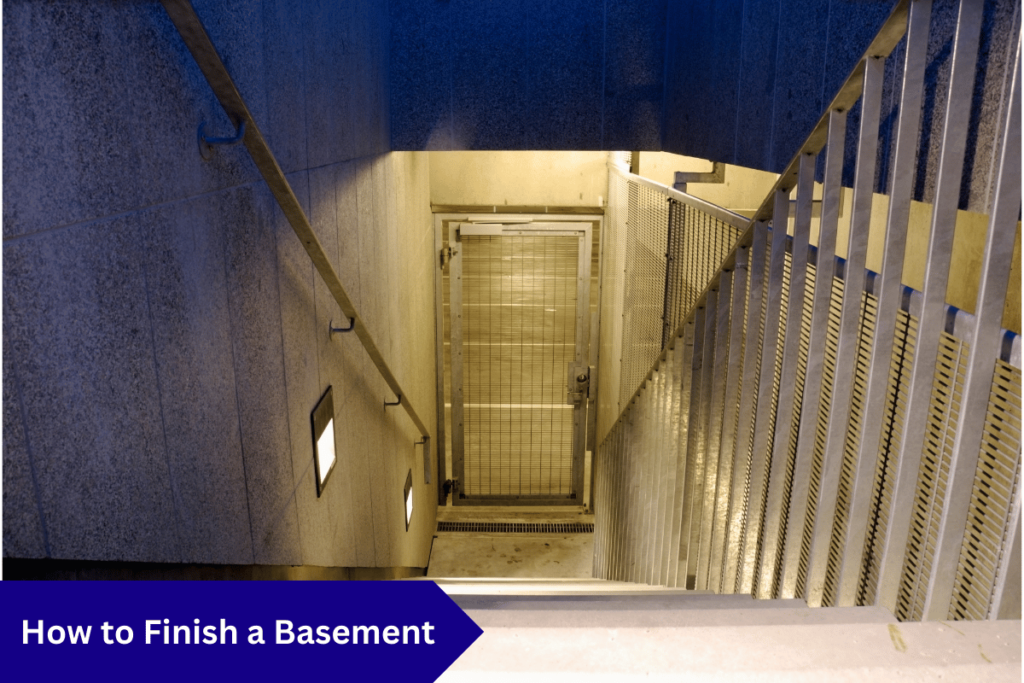Transforming an unfinished basement into a functional living space is a rewarding endeavor that can significantly enhance your home’s value and usability. At America Green Builders, we specialize in guiding homeowners through this intricate process, ensuring each step is executed with precision and care. This comprehensive guide will walk you through the essential stages of finishing a basement, providing detailed insights and practical advice to help you achieve a successful renovation.
Assessing the Basement’s Condition
Before embarking on your basement finishing project, it’s crucial to thoroughly assess the existing conditions to identify potential challenges and necessary preparations.
Evaluating Moisture Levels
Basements are prone to moisture issues, which can lead to mold growth and structural damage. Conduct a moisture test by taping a square of plastic sheeting to the floor and walls. After 24 hours, check for condensation under the plastic. If moisture is present, address it through waterproofing measures before proceeding.
Inspecting for Structural Issues
Examine the foundation walls and floor for cracks, bowing, or other signs of structural problems. These issues must be resolved to ensure the safety and longevity of your finished basement.
Planning and Design
A well-thought-out plan is the cornerstone of a successful basement renovation. Consider the following aspects during the planning phase:
Defining the Purpose
Determine how you intend to use the finished space. Common uses include:
- Home Office: A quiet, dedicated workspace.
- Guest Suite: An additional bedroom and bathroom for visitors.
- Entertainment Area: A media room or game space for family activities.
- Fitness Room: A personal gym equipped with exercise equipment.
Creating a Layout
Develop a detailed floor plan that includes room dimensions, placement of walls, doors, and windows, and the location of utilities such as plumbing and electrical outlets. This plan will serve as a blueprint throughout the renovation process.
Budgeting
Establish a realistic budget that accounts for all aspects of the project, including materials, labor, permits, and contingencies. It’s advisable to allocate an additional 10-15% for unexpected expenses.
Obtaining Permits and Adhering to Building Codes
Compliance with local building codes is essential to ensure safety and legality. Obtain the necessary permits for electrical work, plumbing, and structural modifications. Consult with your local building department to understand specific requirements in your area.
Waterproofing the Basement
Effective waterproofing is vital to prevent future moisture problems. Consider the following methods:
Exterior Waterproofing
This involves excavating around the foundation and applying a waterproof membrane to the exterior walls. While more invasive, it provides a long-term solution to water infiltration.
Interior Waterproofing
Interior methods include applying sealant to walls and floors and installing a sump pump to manage groundwater. This approach is less disruptive but may not address the root cause of moisture issues.
Framing the Walls
Framing provides the structure for your walls and is a critical step in the renovation process.
Selecting Materials
Use pressure-treated lumber for the bottom plates to resist moisture. Standard lumber can be used for the studs and top plates.
Building the Frame
- Measure and Cut: Accurately measure and cut the lumber to size.
- Assemble the Frame: Construct the wall frames on the floor, ensuring they are square and level.
- Install the Frame: Lift the frames into place and secure them to the floor and ceiling joists.
Insulating the Basement
Proper insulation enhances energy efficiency and comfort.
Types of Insulation
- Rigid Foam Insulation: Provides a moisture-resistant barrier and is installed directly against the foundation walls.
- Fiberglass Batts: Installed between the studs, offering soundproofing and thermal insulation.
Installation Process
- Rigid Foam: Attach panels to the foundation walls using adhesive or mechanical fasteners.
- Fiberglass Batts: Place batts between the studs, ensuring a snug fit without compression.
Electrical and Plumbing Work
Incorporating electrical and plumbing systems requires careful planning and adherence to codes.
Electrical Installation
- Plan Outlets and Lighting: Determine the placement of outlets, switches, and lighting fixtures.
- Run Wiring: Install wiring through the studs, maintaining proper spacing and securing with staples.
- Install Fixtures: Attach outlets, switches, and light fixtures as per the layout.
Plumbing Installation
- Plan Plumbing Routes: Map out the paths for water supply and drainage pipes.
- Install Pipes: Run pipes through the walls and floor, ensuring proper slope for drainage.
- Install Fixtures: Set up sinks, toilets, and other plumbing fixtures according to the design.
Installing Drywall
Drywall provides a finished surface for your walls and ceilings.
Hanging Drywall
- Measure and Cut: Cut drywall panels to fit the wall dimensions.
- Attach Panels: Secure panels to the wall studs using drywall screws, ensuring they are flush and level.
Finishing Drywall
- Tape Seams: Apply drywall tape over joints between panels.
- Apply Joint Compound: Spread joint compound over the taped seams and screw holes.
- Sand Smooth: Once dry, sand the surface to achieve a smooth finish.
Flooring Options
Selecting appropriate flooring is essential for durability and aesthetics.
Suitable Flooring Types
- Vinyl Plank Flooring: Water-resistant and available in various styles.
- Carpet Tiles: Provide warmth and are easy to replace if damaged.
- Ceramic Tile: Durable and moisture-resistant, ideal for areas prone to spills.
Installation Considerations
Ensure the subfloor is level and dry before installation. Use moisture barriers as needed to prevent water damage.
Ceiling Finishes
Finishing the ceiling enhances the overall appearance and can conceal utilities.
Drop Ceilings
Consist of a grid system with removable panels, allowing easy access to plumbing and electrical systems.
Drywall Ceilings
Provide a seamless look but require more effort to install and limit access to utilities.
Painting and Finishing Touches
The final steps involve adding color and personal touches to your new space.
Painting
- Prime Surfaces: Apply primer to walls and ceilings to ensure even paint coverage.
- Apply Paint: Use high-quality paint suitable for basement environments to prevent mold and mildew.
Adding Trim and Molding
Install baseboards, crown molding, and window casings to add a polished look to the space.
Frequently Asked Questions
What are the common challenges in finishing a basement?
Finishing a basement presents unique challenges, including moisture control, limited natural light, and ceiling height restrictions. Addressing these issues requires careful planning and the implementation of appropriate solutions, such as waterproofing measures, strategic lighting design, and selecting suitable materials.
How can I maximize natural light in a basement?
To enhance natural light, consider installing egress windows or enlarging existing window openings. Light-colored paint and reflective surfaces can also help brighten the space. Additionally, incorporating mirrors and glass elements can amplify the available light.
What are the best flooring options for basements?
Ideal flooring options for basements include vinyl plank flooring, ceramic tile, and engineered wood. These materials are moisture-resistant and durable, making them suitable for below-grade installations. It’s important to avoid materials like solid hardwood, which can warp in damp conditions.
How do I ensure proper ventilation in a finished basement?
Proper ventilation is crucial to maintain air quality and prevent mold growth. Installing an HVAC system with dehumidification capabilities, using exhaust fans in bathrooms and kitchens, and ensuring adequate airflow through vents and windows can help achieve this.
Conclusion
Finishing a basement opens up new possibilities for expanding your home’s living space while adding value and functionality. Whether you’re creating a cozy family room, a guest suite, or a personal gym, following a structured approach ensures a successful outcome. From assessing moisture levels to selecting durable flooring and adding final touches, each step plays a crucial role in crafting a comfortable and appealing basement.
At America Green Builders, we’re dedicated to helping homeowners achieve beautiful, lasting basement transformations. We bring expertise, quality materials, and attention to detail to every project, making sure your finished basement stands the test of time. Whether you need advice on materials, design ideas, or a full-service renovation team, we’re here to support your vision.







